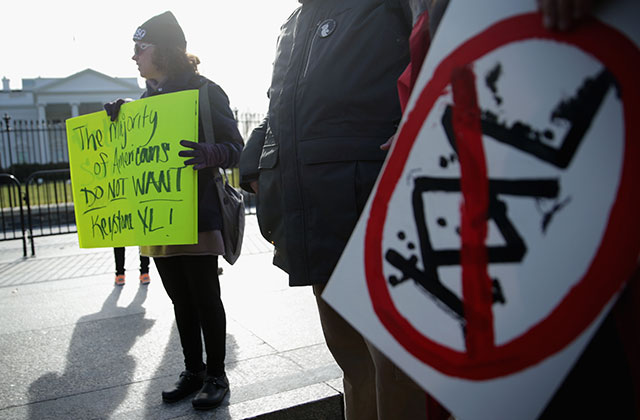In Montana, the Sioux and Assiniboine tribes are working to protect their drinking water from any potential risks the Keystone XL pipeline poses.
The Fort Peck Indian Reservation is home to both American Indian nations, and they know firsthand what can happen when oil drilling destroys a water source. Rolling Stone explores this history and the tribe’s ongoing battle in a story published yesterday (April 19).
The 1,179-mile long pipeline is set to cross west of the reservation on the Missouri River—the same body of water the Sioux people fought to protect against the Dakota Access Pipeline. The Fort Peck Indian Reservation’s only source of fresh water, from an intake plant, sits downstream. People on the reservation used to pull groundwater from their own wells. Then, in the ’90s, tribal members began to notice changes in their tap water: It was salty.
As it turned out, the Murphy Oil Corporation dumped 42 million gallons of wastewater brine into unlined pits between 1952 and 1955, a 2013 investigation published in the University of Montana’s graduate journal found. This water contained benzene, a carcinogen, and reservation residents have seen a cluster of cancer cases as a result.
Now, they’re worried about what the Keystone XL pipeline can do.
"Oh, what the hell, just do it to the Indians: I’m afraid that’s just a lot of people’s attitudes," said Margaret Abbott, who lives on the reservation, to Rolling Stone.
Tribal leaders have attempted to meet with TransCanada, the pipeline developer, but the company canceled a March 16 meeting after protestors picketed tribal headquarters. Another meeting is “tentatively planned,” writes Rolling Stone.
At the meeting, tribal leaders plan on presenting TransCanada three alternate routes that would avoid the reservation and cross the Missouri River downstream of their water intake plant. However, some people want to see the pipeline gone entirely. Opponents have planned their next action on Earth Day, April 22.
Find the entire Rolling Stone article here.
